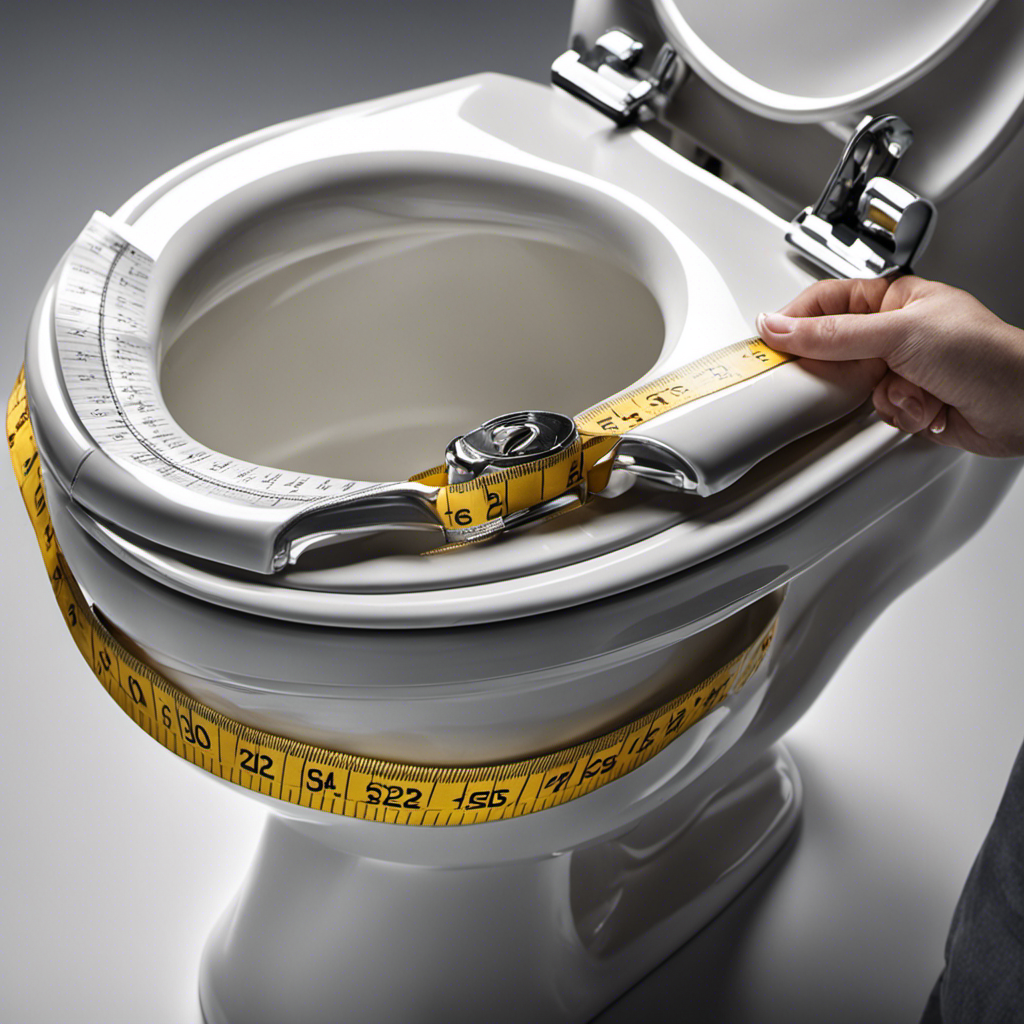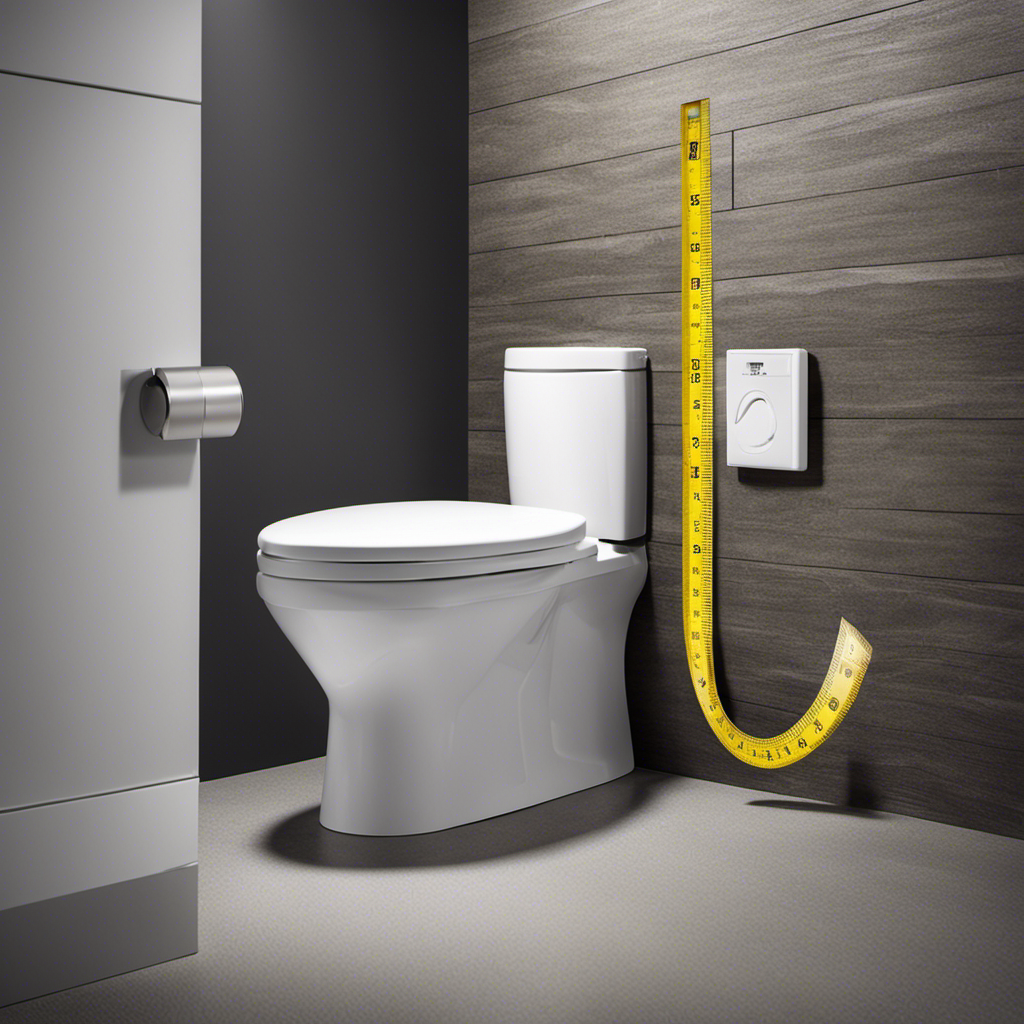Replacing a toilet may seem like a daunting task, but fear not! I’m here to guide you through the process step by step.
In just a few simple and straightforward steps, you’ll be able to swap out your old toilet for a shiny new one.
With the right tools and a little bit of elbow grease, you’ll have a brand new throne in no time.
So roll up your sleeves and let’s get to work!
Key Takeaways
- Gather necessary tools and materials for the replacement process
- Shut off the water supply valve and flush the toilet to remove water before removing the old toilet
- Place the new wax ring on the flange and lower the toilet bowl onto it, ensuring even pressure on the floor
- Connect the water supply line, tighten nuts onto bolts, and check for leaks before finishing with decorative accents and regular maintenance
Tools and Materials Needed
To replace a toilet, you’ll need a screwdriver, adjustable wrench, and a new wax ring. These tools are essential for a successful toilet replacement project.
The screwdriver is used to remove the screws that hold the toilet seat in place, while the adjustable wrench is used to disconnect the water supply line and loosen the nuts that secure the toilet to the floor.
The new wax ring is crucial for creating a watertight seal between the toilet and the floor.
It is important to note that the cost of toilet replacement can vary depending on factors such as the type of toilet and any additional repairs that may be needed.
Common toilet problems that may require replacement include leaks, cracks, and clogs that cannot be fixed.
Preparing for the Replacement
Start by gathering all the necessary tools and materials for the replacement. Before beginning the actual replacement process, it is essential to measure the dimensions of the new toilet to ensure a proper fit in the existing space. This will save you from unnecessary hassle and potential rework. Once you have the correct measurements, locate the water shut-off valve near the toilet and turn it off. This step is crucial to prevent any water leakage during the replacement. Additionally, gather a wrench, a bucket, a sponge, and towels to handle any water spills or cleanups that may occur. By taking these preparatory steps, you are setting yourself up for a smooth and successful toilet replacement.
| Tools | Materials |
|---|---|
| Wrench | New Toilet |
| Bucket | Wax Ring |
| Sponge | Toilet Bolts |
| Towels | Water Supply Line |
Removing the Old Toilet
Once you’ve gathered all the necessary tools and materials, it’s important to begin by shutting off the water supply valve near the toilet. This will prevent any water from flowing during the removal process.
Next, you’ll want to flush the toilet to remove as much water as possible from the tank and bowl.
To remove the old toilet, start by disconnecting the water supply line from the bottom of the tank. Then, loosen the nuts on the closet bolts securing the toilet to the floor.
Carefully lift the toilet straight up and off the closet bolts. Be sure to dispose of the old wax ring properly and clean the area thoroughly.
Common issues with old toilets include leaks, clogs, and inefficient flushing. By replacing your old toilet, you can avoid these problems and improve water efficiency.
Remember to dispose of the waste and old toilet responsibly.
Installing the New Toilet
After disconnecting the old toilet, it’s time to carefully position and secure the new toilet to the floor.
Start by placing a wax ring on the flange, ensuring a proper seal.
Then, lower the toilet bowl onto the wax ring, aligning the bolts with the holes in the flange.
Gently press the toilet down, making sure it sits evenly on the floor.
Next, tighten the nuts onto the bolts, being careful not to overtighten and crack the toilet.
Connect the water supply line to the fill valve, ensuring it is securely fastened.
Finally, turn on the water supply and check for any leaks.
Troubleshooting common installation issues may involve adjusting the wax ring or tightening loose bolts.
When choosing a new toilet, consider factors such as bowl shape, flushing mechanism, and water efficiency to ensure it’s the right fit for your bathroom.
Finishing Touches and Tips
To complete the installation, make sure to securely tighten the nuts onto the bolts, being careful not to overtighten and crack the toilet.
Once the toilet is securely in place, there are a few finishing touches and tips to consider. Here are some important things to keep in mind:
-
Decorative Accents: Consider adding decorative accents such as a toilet seat cover or a matching toilet paper holder to enhance the overall look of your bathroom.
-
Troubleshooting Common Issues: If you experience any leaks or wobbling after installation, check the wax ring and make sure it is properly sealed. Also, ensure that the tank and bowl are tightly connected.
-
Water Supply: Double-check the water supply connection to ensure it is secure and leak-free. If you notice any leaks, tighten the connection or consider using plumber’s tape for added security.
-
Cleaning and Maintenance: Regularly clean the toilet with a non-abrasive cleaner to prevent stains and keep it looking its best. Additionally, check the flush mechanism and replace any worn-out parts as needed.
-
Proper Ventilation: Ensure that your bathroom has proper ventilation to prevent moisture buildup, which can lead to mold and mildew growth. Consider installing an exhaust fan if necessary.
Frequently Asked Questions
Can I Replace a Toilet by Myself, or Do I Need to Hire a Professional Plumber?
I can replace a toilet by myself, but hiring a professional plumber has benefits. DIY toilet installation requires careful removal, installation, and plumbing connections. A plumber ensures proper alignment, prevents leaks, and provides expertise.
How Long Does It Typically Take to Replace a Toilet?
Replacing a toilet can be a swift operation, usually taking around 1-2 hours. However, this timeframe may vary depending on the experience level and tools available. Proper toilet installation ensures a smooth and efficient process.
Is It Necessary to Shut off the Water Supply Before Removing the Old Toilet?
Yes, it is necessary to shut off the water supply before removing the old toilet. It is important to wear gloves for hygiene and safety. The steps for properly disposing of an old toilet include contacting your local waste management facility for guidance.
Can I Reuse the Wax Ring When Installing the New Toilet?
Yes, you can reuse the wax ring when installing the new toilet, but it is not recommended. Alternatives to the wax ring include rubber gaskets or wax-free seals, which provide a better seal and prevent leaks.
What Should I Do if There Is a Leak After Installing the New Toilet?
If there is a leak after installing the new toilet, first check for a cracked toilet during installation. Troubleshoot common toilet leak issues by inspecting the wax ring, supply line, and water connections.
Conclusion
And there you have it, the step-by-step guide on how to replace a toilet.
Armed with the right tools and materials, a little bit of preparation, and some careful maneuvering, you can successfully remove that old, worn-out throne and replace it with a shiny new one.
Just imagine the satisfaction of completing this task yourself, the sense of accomplishment as you flush away the old and welcome the new.
So, what are you waiting for? Get ready to take on the challenge and transform your bathroom into a sanctuary of comfort and functionality.










